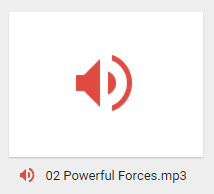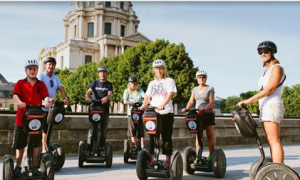Last week, I was fortunate enough to attend the Society for Information Technology and  Teacher Education (SITE) conference in Vegas. Five days of sessions conducted around peer-reviewed research focused on the best of what technology can bring to education for improving student learning. Presenters were from colleges and universities of all shapes and sizes from all over the world. My biggest takeaway?
Teacher Education (SITE) conference in Vegas. Five days of sessions conducted around peer-reviewed research focused on the best of what technology can bring to education for improving student learning. Presenters were from colleges and universities of all shapes and sizes from all over the world. My biggest takeaway?
We are not alone. In fact, help is out there from our peers and others help us serve our learners better.
Of numerous choices SITE organized by keywords, I chose sessions reflective of NMC focus areas such as flipping the classroom, active learning classrooms, supporting busy and diverse instructors, and assessment for learning. Not surprisingly, round tables discussing questions raised by new research from multiple people’s perspectives were the most helpful. A common thread emerged across all of the discussions, in that the best solutions came from conversations across the disciplines fueled by a desire to meet student needs. In other words, formal or informal professional learning communities of practice. Here are a few high points:
- Think about “fortifying” your class, rather than flipping it. Consider your unique class setting, and then look for ways “to add material to for strengthening or enriching” or “to add mental or moral strength to” for your students (Mirriam Webster Dictionary). The question, “How c
 an you use technology to help students access learning that supports your learning outcomes?” has numerous answers. For some, it may be creating short podcasts students can listen to while commuting. For others, it may be asking students to take example photos related to the course materials in their own environment, or interviewing family members to collect data. Regardless, tapping into the community of support at hand is the key to success. (Timothy Pelton and Leslee Francis Pelton, University of Victoria)
an you use technology to help students access learning that supports your learning outcomes?” has numerous answers. For some, it may be creating short podcasts students can listen to while commuting. For others, it may be asking students to take example photos related to the course materials in their own environment, or interviewing family members to collect data. Regardless, tapping into the community of support at hand is the key to success. (Timothy Pelton and Leslee Francis Pelton, University of Victoria)
- Case studies are a powerful tool in engaging teachers to improve their assessment practices. While teaching assessment methods, Aslihan Unal of Georgia Southern University found that once the students began sharing their own assessment challenges in the field, the level of learning deepened as peers began helping peers. In fact, the discussions became so rich and varied that managing them in an online discussion board was overwhelming! Rather than limit or cut short the discussions, Dr. Unal created www.TeacherServer.com where anyone can share challenges and/or solutions to common teaching dilemmas. The top 10 current topics have over a hundred suggested solutions each! Currently targeting k-12, we (or anyone) can choose to add additional categories, such as higher ed.
- Sustainable faculty development is a “Community of Practice in Motion,” and the answer seems to be creating a strong but fluid ecosystem of resources around quality instruction. Mentoring the “I”djunct faculty, web resources, emails, rubrics, collaboration, building classroom community for PD, brown bags, and regular professional development workshops are all needed elements. Regardless of the session or the approach taken, everyone agreed that aligning professional development with student success (and serving food!) is the basis of any successful approach.
- What do go-pro cameras on a painted 4 x 4 board have to do with iPads on something akin to
 miniature Seg Ways? No longer “go big or stay home,” Active learning classrooms (ALC’s) are now “go big or make do.” Fortunately, thanks to many people at NMC (Kyle Morrison, Mark DeLonge, Cathy McCall, and the recent Michigan Workforce Development grant) NMC can both go big and make do with high quality facilities and resources for faculty and students to move beyond traditional classroom learning.
miniature Seg Ways? No longer “go big or stay home,” Active learning classrooms (ALC’s) are now “go big or make do.” Fortunately, thanks to many people at NMC (Kyle Morrison, Mark DeLonge, Cathy McCall, and the recent Michigan Workforce Development grant) NMC can both go big and make do with high quality facilities and resources for faculty and students to move beyond traditional classroom learning.
If you are interested in any of the full papers associated with the reference links, please contact me (trusso@nmc.edu) and I will email you a copy. Or, just call home, like ET:) No need to be alone in teaching any more.

